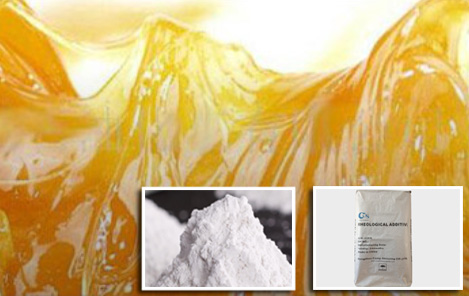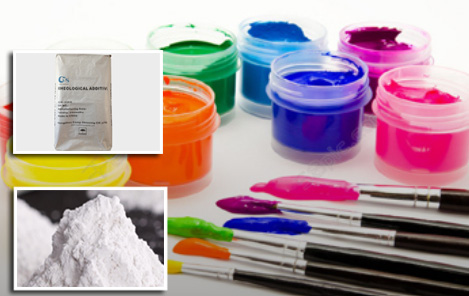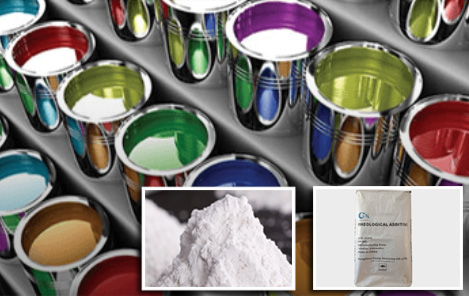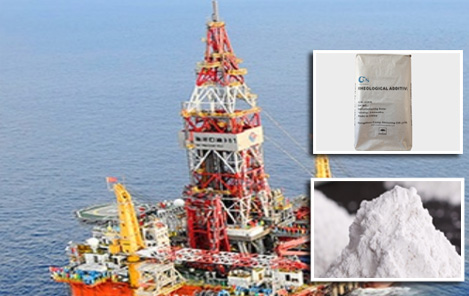Zhejiang Camp – Shinning New Material Co., Ltd. is a world-renowned manufacturer and supplier of Organoclay Bentonite, which has passed ISO9001 certification. Organophilic clay is a rheological additive specially designed for oil drilling mud fluid, paint coating, ink, industrial wastewater treatment, lubricating grease, cosmetics, sealant, etc., which includes two categories of solvent-based system and water-based system.
Available at a competitive organoclay price, our solutions deliver both quality and cost-effectiveness for global partners.
Organic bentonite clay‘s main function is to provide anti-settling, anti-sagging, rheology, thixotropy, suspension additives.
At present, Camp – Shinning’s CP series organo clay bentonite has formed partnerships with many world-famous companies, and the organobentonite rheology modifiers are exported to Russia, Canada, the United States, Germany, Kuwait, the United Arab Emirates, Saudi Arabia, and other regions.
organoclay uses
What Is Organoclay & organoclay applications
- Grease Grade
Organo clay is a modified rheological additive optimized for bentonite grease formulations using synthetic oils, delivering enhanced gelling power, shear-responsive thixotropy, and anti-settling stability in bentonite clay based grease systems, particularly eco-friendly bentonite clay grease applications.
Packing: 25Kg/Bag Or 22.68Kg/Bag,16MT/20FCL
- Inks Grade
Organobentonite is a rheology modifier engineered for low-to-medium polarity solvent-based ink systems (including planographic, gravure, and next-generation inks), delivering rapid gelation kinetics, shear-responsive thixotropy, and sedimentation resistance through its optimized structural network for enhanced pigment stabilization.
Packing: 25Kg/Bag Or 22.68Kg/Bag,16MT/20FCL
- Paint Grade
Organophilic Clay (Modified Bentonite montmorillonite) is a rheological additive engineered for solvent-based systems, offering universal compatibility across low-to-medium-high polarity solvents while simultaneously imparting robust particle suspension to prevent pigment/filler sedimentation.
Packing: 25Kg/Bag Or 22.68Kg/Bag,16MT/20FCL
- Oil Drilling Grade
Organophilic Clay is an advanced wet process viscosifier/gelling agent engineered for bentonite clay drilling mud and bentonite drilling fluid, delivering rapid dispersion and high-efficiency performance in diesel/crude oils and synthetic base fluids, while maintaining stability, suspension, and thixotropic properties essential for bentonite for drilling applications .
Packing: 25Kg/Bag Or 22.68Kg/Bag,16MT/20FCL
About Us
Organophilic clay suppliers
Organoclay Filter Media & Water Treatment Solutions: As China’s premier organoclay supplier, Camp Shinning specializes in advanced organoclay for water filtration and oil removal, delivering tailored organoclay filter systems that excel in adsorption efficiency for industrial water treatment, while extending applications to drilling additives, grease optimization, and ink/paint anti-sagging formulations through adaptive hydrophilic modification.
organoclay rheological additive
CP-150 ORGANOPHILIC CLAY
CP-982 Organophilic bentonite
CP-992 Organobentonite
Organoclay Gelling Agent - 2022 Best For Grease & Lubricant
CP-180 Bentonite grease
CP-EDS Hectorite organoclay
CP-EZ10 Organic bentonite clay
Aqueous rheology modifiers | Inorganic Rheology Modifiers
Rheology Modifiers for Waterborne Paints
CP-EW For water based paints
CP-WBS For water borne formula
CP-EWS For water Based paint
- Whatsapp/Wechat +86-13185071071
Let Us Find the Right Organoclay Chemistry for Your Formulation
Whether your application formula is used in paint, oil field drilling, grease lubricant or cosmetics, our organoclays viscosifier |organophilic thickening clay is your most correct choice. Camp Shinning provides multiple varieties of organobentonite for users which has a good organoclay price and a very competitive advantage.


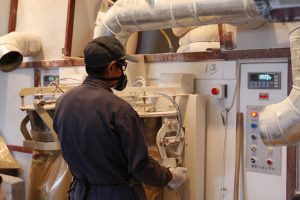
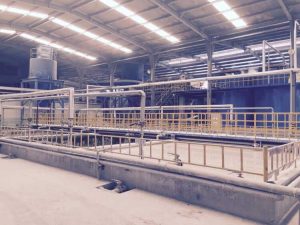


The Organoclay bentonite | Organophilic clay -specialized Zhejiang Camp-Shinning New Material CO.,LTD. and Hangzhou Camp-Shinning CO.,LTD. are subsidiaries of Camp-Shinning. We are an drilling fluid chemicals | Oilfield chemicals supplier and manufacturer in China.
Camp-shinning concentrated on high value-added, high-technology organo bentonite series products, particularly in research, development, manufacturing, and sales of organic (solvent based organoclay) and inorganic bentonite (water based organoclay).
Our Organophilic bentonite clay finds widespread application in oil drilling mud, paint, coating, lubricating grease, adhesive, construction mortar, cosmetics, and waste water treatment, among other applications. A group of world-class professional users and distributors, such as SUN CHEMICAL,,SIEGWERK,LEHMANN &VOsS, and others, have acknowledged our dependable quality.
Current annual production of organic bentonite clay | organoclay thickener is 20,000 metric tons, while refined bentonite production is 15,000 metric tons.
Our ISO 9001 quality system certification and IS014001 environmental management system certification, as well as our own mine with superior ore quality and production of proprietary technology, ensure the long-term quality and supply stability of our Organoclay bentonite | Organophilic clay.
Our mission is to provide users with superior Organoclay bentonite | Organophilic clay and services and to collaborate with them to achieve success and glory.
Internet address: https://www.rheologymodifiers.com/ and email address: [email protected]
Whatsapp / Wechat: +86-13185071071
organoclay products
“Engineered with surface-modified chemistry and precisely controlled composition ratios, our organoclay maintains a stable density range (1.6-1.9g/cm³) critical for industrial applications. For buyers requiring certified material traceability and properties, bulk purchasing options include full analytical reports detailing chemical structures, elemental composition, and density verification data to ensure process compatibility.”
Organoclay viscosifier is a anti sagging agent and anti settling agent .
Organoclay viscosifiers are organic clays that are dispersible, yield quickly, and are simple to use.
Organic clays like these are used in solvent-based paints and oil drilling mud, So it is also named organoclay drilling product aimed. They are also used for a variety of other purposes.
Organoclay viscosifier internal non-oleaginous phase
A non-oleaginous fluid internal phase may exist in an organoclay viscosifier.
The fluid could be water, an oil-based liquid like mineral oil, or a salt solution. Sodium chloride, potassium chloride, calcium chloride, or a combination of these salts may be present.
Organoclay viscosifier
A layered material used in drilling fluids is an organoclay viscosifier (OBM). It is a good dispersion medium and a stable substance at low temperatures.
Organoclay viscosifiers have been tested in the laboratory and shown to increase the viscosity of the organic phase in drilling fluids.
Because of its excellent rheological properties, this viscosifier is an excellent alternative to gelling agents.
It has excellent antisag properties and rapidly develops maximum rheological properties. It can be used as a gelling agent substitute in mud plant operations with low shear rates.
Organoclay viscosifier
It has a higher pour point than commercial organoclay. This result is significant in drilling fluids because it allows for faster drilling rates.
It also has a lower apparent viscosity, which is required for efficient oil and gas well drilling. The distinction between the two viscosifiers is significant.
Organoclay viscosifier
Oil-based drilling fluids contain organoclays. However, these viscosifiers have some limitations. High temperatures in drilling fluids can harm traditional organoclays.
Cationic clays and quaternary ammonium salts are used to make organoclays. They are relatively cheap and easily dispersed in oil.
Effect of oleaginous internal phase on wellbore fluid rheological profile
In one embodiment, an emulsifying agent stabilizes the oil-in-water wellbore fluid to form an invert emulsion.
This fluid may contain an oleaginous internal phase or have a water/oil ratio less than 50/50. Invert emulsions with a high internal-phase ratio may have rheological properties similar to the aqueous phase.
Organoclay viscosifier
Shear strength increases linearly with shear rate when the oil-water ratio is less than 80.
This is because the oil-water mixture has a low number of free droplets, which reduces internal friction. When the oil-water ratio exceeds 80, shear stress increases in both phases.
The oil-water ratio is an important factor in determining a wellbore fluid’s shear stress and apparent viscosity.
Lowering the oil-water ratio reduces shear stress while increasing wellbore fluid viscosity. Temperature, on the other hand, has a significant impact on the shear stress of the oil-water mixture.
Organoclay viscosifier
The oleaginous internal phase in wellbore fluid serves several purposes. The fluid is responsible for moving drill cuttings from the bottom of the hole to the surface, suspending cuttings when the wellbore is interrupted, and controlling subsurface pressures.
It also serves to keep the wellbore intact until the well section is finished. This fluid also cools and lubricates the drill string, allowing the wellbore penetration rate to be optimized.
Wellbore fluids based on oil may also have improved rheological and thermal-static properties. The low-end rheology, plastic viscosity, and yield point of these oil-based fluids can be improved.
Furthermore, these fluids may be compatible with brine chemistries and are not temperature sensitive.
The addition of an emulsifier to an oil-based wellbore fluid can improve the oil-water emulsion’s stability.
Molecular weight contributions can be used to calculate the amount of lipophilic versus hydrophilic groups.
For a variety of reasons, oil-water emulsions containing organophilic clay (organoclay) are widely used in water-based drilling fluids. Because of their excellent fluidity and stability, they are an excellent choice for drilling fluid systems.
When exposed to higher temperatures, however, they exhibit insufficient rheological properties. These properties can be improved and organoclay stabilized by using an oil-water emulsion.
Organoclay viscosifier
Invert emulsifiers are another method for producing oleaginous-aqueous mixtures in wellbore fluids. This type of emulsifier can also be used to make a wellbore fluid that is free of solids.
What exactly is Organoclay?
The first thing you probably wonder when you see an organically modified phyllosilicate is what organoclay is.
Organophilic clay is made up of organic bentonite clay moieties that are covalently linked to the parent phyllosilicate.
Its large surface area and hydrophobic chains make it suitable for a wide range of applications, including oil-based drilling fluids, paint formulations, and water purification.
An organophilic bentonite clay contains water-exchangeable quaternary ammonium ions. The organophilic clay of the present invention is more stable against hydrolysis than the tetraalkylammonium ions used in the prior art.
Its optimal water-to-oil content range is five to forty percent. This clay can also be used to thicken oil emulsions.
Organophilic clay can be used as a polymer nucleating agent, a component in paint formulations, and a viscosifier in oil-based drilling fluids.
Because of its large surface area and hydrophobic chain properties, it is useful in a variety of industries. If you are a paint manufacturer, you should consider contacting an organophilic clay supplier.
The yield point of organophilic clay is affected by the aqueous phase composition and clay dispersion.
The composition of base oils and polar activators, as well as the amount of oil in the oil, all influence the yield point of organophilic clay in the aqueous phase.
Contact base oils and polar activators to learn how to incorporate organophilic clay into oils.
Organophilic clay is a bentonite that has been organically modified. It is used in drilling fluids as a gelling agent. Camp Shinning is an excellent source of organophilic clay.
There are numerous advantages to using organophilic clays. They are useful as primary viscosifiers in drilling fluids due to their high equivalent circulating density and slow chemical reaction time.
However, because of their slow chemical reaction rates, they are unstable under certain conditions and tend to stratify. Organophilic clays are expensive to use due to the chemical reaction times and pressure spikes.
Furthermore, they have a limited temperature range, with high temperatures causing colloidal thermal degradation and low temperatures causing excessive viscosity.
The invention concerns organophilic clays. These clays are composed of fatty acid moieties with a medium chain length. This enables them to provide improved viscosity in drilling fluids at high temperatures.
They are, however, susceptible to hydrolysis when exposed to water, limiting their use to oil-based compositions and high-temperature drilling fluids. This invention will provide an efficient and environmentally friendly drilling fluid solution.
Organophilic clay is a type of smectite clay that has undergone ion exchange with quaternary ammonium ions.
These clays contain at least 75% mol% Bis-(2-hydroxypropyl-dimethylammonium) fatty acid esters. Furthermore, the clay’s composition may include a mixture of bis-(2-hydroxypropyl-dimethylammonium fatty acid esters.
What Is the Purpose of OrganoClay?
If you’re wondering what Organoclay is and how it works, this article will explain. This clay is suitable for a wide range of applications and is environmentally friendly.
Here are a few examples of how organoclay | Organic Clay is used. Organoclay is used to clean wastewater in the wastewater treatment industry. It is also useful for water purification. Organoclay has numerous other applications in addition to these.
Organoclay is made up of zwitterionic substances with complicated adsorption positions. Because of its low toxicity and biodegradability, it is an excellent choice for environmental remediation.
Organoclays have been used in oil-water separation, paint formulations, and oil-based drilling fluids. This is one of the most commonly used chemicals in the industry. Because of its adsorption and flocculation properties, it is useful in a wide range of applications.
Organoclay is a versatile filler in addition to its environmental benefits. Because it is compatible with organic polymers, it can form a protective colloidal layer on polymer surfaces.
It also improves polymer system stability, allowing it to be used as a solvent-free paint. Because of its high adsorption capacity, it is also a good choice for solvent-free paints.
Organoclay is used in wastewater treatment to remove oil and grease. In fact, the average fabricator must meet a five-ppm oil and grease discharge limit, and organoclay removes these oils in water just as well as activated carbon.
This is a significant cost-cutting measure that is highly recommended for wastewater treatment. But how exactly does organoclay work? In this article, we’ll take a closer look at its distinguishing features.
Organoclay’s ability to thicken liquids is one of its most intriguing properties. It can also be used to suspend pigments and stabilize emulsions.
In addition to these uses, organoclay is an effective filtration medium. It can even be used to change the properties of polymers.
Organoclay is a type of clay that has been chemically modified and is used to treat wastewater. It is composed of volcanic ash and the mineral montmorillonite.
It is then fortified with quaternary amines, which are the compounds responsible for Organoclay’s useful industrial properties.
Organoclay has the ability to dissolve oil and grease as well as clean water after industrial processes. It is even capable of cleaning groundwater.
Researchers, for example, investigated the adsorption of model hydrocarbons on talc. Toluene and benzene were discovered to have a higher affinity for talc.
The amount of surface-active substances determines the difference between talc and pyrophyllite-water suspensions.
What Are Cosmetic Rheology control additives Modifiers?
Rheology control additives modifiers are additives that improve a cosmetic product’s consistency.
They are made from organic bentonite clay and can be low, medium, or high polar. They can be used to make creams, gels, and lotions more viscous. Organoclay is a common cosmetic ingredient.
It is a organoclay with a high molecular weight that dissolves quickly in liquids to form a viscous solution. It can also function as a thickener, stabilizer, and suspending agent.
Although rheological additives are necessary ingredients in personal care products. Consumers are concerned about climate change and plastic pollution.
Consumers are increasingly seeking products containing plant-based ingredients that have short CO2 life cycles and biodegrade easily in the environment. Rheology control additives modifiers are typically thickeners, but they can also have other characteristics such as being ring-gel-like, thixotropic, or stringy-flowable.
Rheology additive modifier polymers are typically composed of hydrophobic materials . This material is biocompatible and has good rheology.
Rheology modifiers are widely used additives in almost every industry. They modify a formulation’s viscosity to provide specific functionality. These changes were made possible by rheology additive modifiers.
Process engineers can use rheology snapshots to scale up processes, audit production lines in other countries, and develop test methods.
In today’s competitive market, it is critical for quality control testing, formulation, and process design. Rheology additives testing solutions are experts in the development and profiling of test methods.
Rheology testing solutions can provide you with the knowledge you need to develop market-ready products.
What is the meaning of Rheology Modifier in Drilling Fluid?
Rheology modifiers are synthetic polymers that are used to improve the properties of drilling fluids.
These compounds improve the shear force and stability of oil-based drilling fluids. These polymers’ improved rheology properties improve the stability and shearing force of cuttings in drilling fluid.
Organic clay is also important for environmental protection. These characteristics allow for increased drilling efficiency. These compounds have a wide range of applications in the oil and gas industry.
Rheology modifiers are used in the preparation and maintenance of oil drilling fluids. They improve low-shear-rate rheology by reducing interfacial tension. They also help with barite suspension.
They are particularly useful when the annular velocity is low and the fluid density is high. Rheology modifiers aid in lowering the risk of lost circulation. The well will not produce oil if the drilling fluid becomes viscous.
Drilling fluids with rheology modifiers performed better in emulsion stability tests. They were able to reduce dynamic barite sag while minimizing negative effects . For example, barite is a heavyweight material.
As a result, drilling fluids containing barite should contain some oil wetter. The addition of these two additives improves rheological stability.
The yield point of a typical rheology modifier is 11-12 Pa, which varies with temperature. When temperatures are below 65°C, this can cause significant variations in rheological properties.
the suspension of cuttings and weighting materials by stabilizing these rheological properties. This rheology modifier has a number of benefits, including improved well cleanup and drilling efficiency.
An organic compound or a polymer can be used as a rheology modifier. The polymer in this case has hydrophobic groups and can be partially dissolved in the oil phase or adsorbed on the organic clay.
The type of additive chosen will be determined by the alkalinity of the brine phase. The additives will bind with clay if they are soluble in the oil phase.
Drilling fluids, in general, changing viscosity in response to temperature. When the viscosity of the drilling fluid is reduced from ambient to seabed conditions, it can increase severalfold, whereas viscosity increases as the temperature drops.
Mineral oil and synthetic-based oils have the lowest viscosity and are both suitable for deepwater drilling. Diesel also has a low viscosity, which is critical in drilling operations.
Drilling fluids are also known to change the properties of the oil and water particles contained within them. This change affects the formation’s hydrostatic pressure and wettability.
If this happens, it can pose a significant well-control risk and impede production operations. However, the viscosity of the drilling fluid and the concentration of the oil play a significant role in determining the oil and water contents.
What is the definition of rheology modifier in paint and coatings? Rheology modifiers are substances that increase the viscosity of a paint or coating to change its properties.
Depending on the method of application, these ingredients can improve the final product’s durability and handling. They can also improve sagging resistance, storage and transportation, and leveling properties.
This component is frequently used to improve the properties of a coating or paint.
Associative thickeners organo clay in the CP series are used in water-based paint formulations.
CP organoclay is a water-based paint system rheology modifier that is 40% active. These ingredients are used to make a coating smooth and level.
Rheology modifiers can change the properties of the final product. These ingredients can also have an impact on production time. Some are in powder form and, if added too quickly, can cause clumping.
Slowing down the addition of these materials will aid in clump prevention and improve film quality. Slow, steady addition of rheology modifiers may reduce production time.
Use highly efficient modifiers that are compatible with the specific type of paint or coating for the best results.
A variety of factors must be considered when selecting the best rheology modifier.
When selecting a rheology modifier, important factors to consider include the type of paint or coating, the primary application, the method of application, and the final production time.
Rheology is an important part of the formulation process because it influences application properties as well as the stability of the paint or coating during storage.
Aside from adhesion and leveling, the paint must be stable and non-drip. Because the coating will be exposed to temperature changes and moisture, it must also maintain its in-can stability.
Finally, rheology modifiers are critical in the manufacture of paints and coatings.
The definition of rheology in the context of paints and coatings is complicated, but it is critical for their application. Paints and varnishes, for example, must have flow properties.
However, in some cases, such as for a high-gloss paint or varnish, a higher viscosity is desirable. This is due to the fact that the finished product is more durable and has a higher gloss.
Hydrophobic emulsion thickeners are another type of rheology modifier. These can be dissolved in liquids and are commonly used in latex paints.
Because of their high water resistance, they act as rheological modifiers. Because of their high viscosity, they are useful in coatings with thick films. They can also help to prevent sagging and settling.
Rheology modifiers are materials that alter the rheological properties of components.
It is a relatively recommended rheological modifier in the paint and coating industry due to its improved film forming ability.
What exactly is a rheological modifier?
When rheology modifiers are added to paint coatings, the viscosity of the entire formulation increases and the properties and characteristics of the entire formulation are optimally controlled.
As a result, many people believe that rheology modifiers can alter the rheological properties of materials.
What exactly is rheological additive?
The oil-based modifier performs better as an organo clay anti-settling agent.
It also performs better in solvent-based systems, including organic liquids with middle or low polarity.
An improved organic clay is used as a rheological additive in the paint.
What exactly is a rheology modifier in paint?
You can use organoclay rheology modifier in paint, coating, grease, and, of course, inks.
At the moment, Camp Shinning’s newly developed rheological modifier is widely used in oil field drilling.
It has ideal rheological properties.
In addition to increasing the required viscosity, it can also make the entire formula, such as paint, more stable, and is therefore ideal for.
It is easy to use and has good anti-sagging properties.
You can use rheology modifiers in cosmetics or rheology modifiers in paints.
Our products are worthy of your recommendation.
Rheology modifiers come in a variety of forms, including inorganic and organic.
Our rheology modifiers can be used in both oil and inorganic aqueous – water based systems.
Our bleeding disease means that it can effectively reduce the falling and flying sword of the paint when using a roller or brush, implying that it has better anti-sagging properties.
It can improve its rheological properties after being smeared due to a rapid but controllable increase in awareness.
It is also an anti-settling agent because it effectively controls precipitation during storage and transportation.
We are eager to find an appropriate rheological modifier for your formula.
We are well-known for our excellent anti-sagging and thixotropy performance.
It has excellent rheological properties.
water-based, solvent-based, and solvent-free formulation rheology modifiers
Modifiers of rheology for water-based systems
Our organobentonite can effectively form colloidal gel in ionic and non-ionic aqueous solutions after fine grinding, providing thixotropic, thickening, and suspension.
Modifiers of rheology for solvent-based systems
It has good anti-settling and anti-sagging properties in solvent-based systems.
It can be used in solvent-based industrial coatings, architectural coatings, anti-corrosion coatings, and marine coatings.
If your formula contains self-prepared pigments or relatives, or topcoats that require maximum gloss, we recommend using Kangbaixin’s rheological
If your formula contains self-prepared pigments or relatives, or topcoats that require maximum gloss, we recommend using Kangbaixin’s rheological modifier, which is primarily used in solvent systems.
Simultaneously, the rheological additive exhibits relatively stable high-temperature stability.
The non-aqueous agent formula has excellent anti-sagging properties and standard denaturation.
To prevent solvent coating sedimentation, we strongly recommend that you use Camp Shinning’s anti sedimentation agent, organic bentonite.
Modifiers of rheology for solvent-free systems
Rheological modifiers can be used to achieve remarkable rheological properties after shear thinning to prevent pigment sedimentation in solvent-based coatings and the formation of hard raw material precipitation.
In both aqueous and solvent-based systems, rheology modifiers are crucial at each stage of the key manufacturing, storage, and application processes.
They are suitable for use as rheological modifiers in both solvent-based and aqueous systems.
They are stable at high temperatures and have better control over viscosity.
The Advantages and Drawbacks of Rheology Modifiers
Rheology modifiers are important coatings additives because they control viscosity, ease of application, and wet edge and sagging. However, choosing the right rheology modifier can be challenging .
Rheological modifiers are available in both solvent-borne and waterborne coatings, each with its own set of benefits and drawbacks. Let’s go over the main advantages and disadvantages of these additives.
Rheology modifiers are classified into two types: inorganic and organic. Natural compounds, such as organoclay, are the primary source of inorganic rheology modifiers.
They thicken by forming polymer chains linked by pseudo-crosslinks within micellar nodes. These thickeners are water resistant and can be used in place of hydroxyethyl cellulose.
Rheology modifiers are also used extensively in advanced materials. Rheology modifiers are used in almost every industry to improve performance and adjust overall viscosity magnitude.
To investigate the impact of formulation changes on protein solutions, several rheological measurement methods are used.
These additives are necessary components of a wide range of products, including foods, beverages, and cosmetics. To improve the quality and performance of your products, you must choose the right rheology modifier.
Paint rheology, in addition to viscosity, is important for application properties, storage stability, and anti-sagging.
In addition to influencing paint application, rheology influences paint properties such as gloss, adhesion, covering power, brush resistance, and sedimentation tendency.
In-can stability is also affected by rheology. A well-chosen rheology modifier can mean the difference between a stable, high-quality coating and one that sags or drips.
Rheology modifiers for waterborne paints, It can also be used in solvent systems.When there are for paints used in water-based systems, we call them Inorganic rheology modifiers. So sometimes many users call it anti settling agent for water based paints .
Rheology modifier manufacturers: Camp Shinning
At present, our price advantage is very obvious, when our organic unity is used in the water-based system.Rheology modifiers for waterborne paints.
Rheology modifiers in cosmetics : The cosmetics here mainly refer to nail polish. In order to make nail polish produce a better thickening effect.
that is, to add a thickening agent rheology modifier, we often recommend you to use the rheological additives produced by Camp Shinning.
It can make nail polish produce a better thickening performance, and the anti settling performance is in your storage process.
Rheology modifiers in paints : The use of rheology modifiers in paint and coatings is mainly to achieve its rheological properties.
In addition to obtaining a more suitable viscosity, we also add Rheology modifier that are conducive to the stability of the coating, especially easy to operate, which can effectively prevent sedimentation and show good thixotropic properties. So organoclay is a goof anti settling agent in paint .
Types of rheology modifiers : Different people have different calls for organoclay. Some people call rheology modifier ,rheology modifiers thickeners,rheology modifiers for oil,rheological modifier and inorganic rheology modifiers.
In fact,there are many types of rheology modifiers. It can do for oil,coatings,paints, cosmetics and for waterborne paints. The whole demand market is very big.
So if you want to know what is rheology modifier , please contact us now, because we are a well known supplier and manufacturer in China.
Inorganic rheology modifiers is an organic bentonite clay used in water based system. It has excellent performance in water based system, such as anti sedimentation, anti sagging, denaturation, etc.
Of course, rheological property is its biggest feature. Therefore, rheology modifiers for waterborne paints. Of course, it is also used in solvent based system.
What Are Rheology Modifiers?
